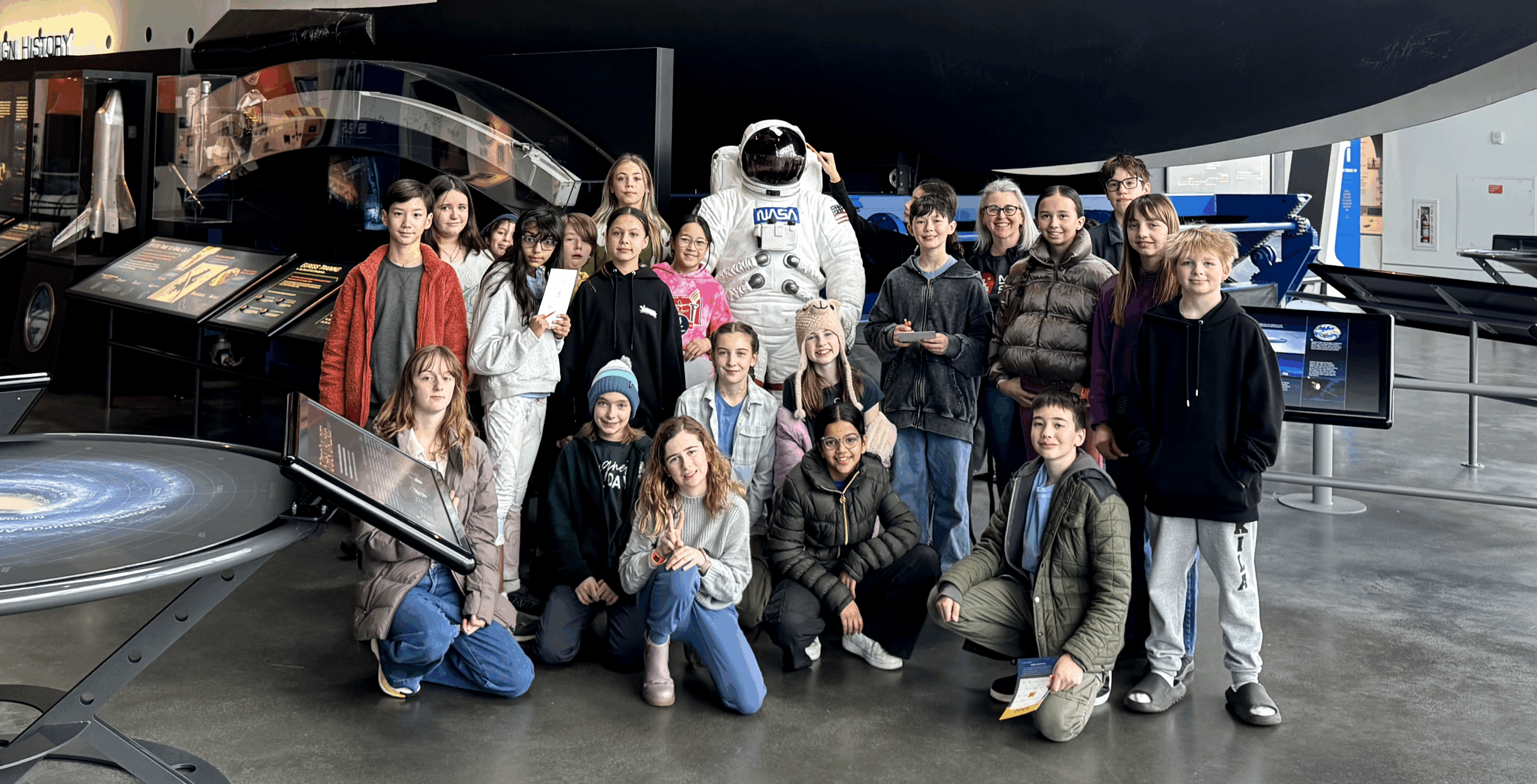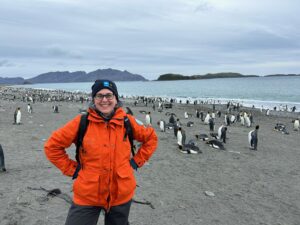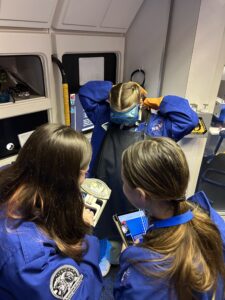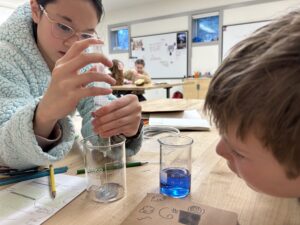
When Caroline Little’s sixth-grade students stepped into Seattle’s Challenger Learning Center at the Museum of Flight, they weren’t just on a field trip. They were astronauts on a mission to Mars. For two immersive hours, her students searched for water, analyzed Martian samples, and worked together to save their spacecraft. And while the simulated mission may have taken place on Earth, its impact on these young learners reached astronomical heights.
A Trailblazer in STEM and Life
 Caroline is no stranger to bold new frontiers. Now in her 24th year as an educator, she began her career teaching French. But eight years ago, a NASA program called Microgravity University for Educators reignited her passion for science. “It really rekindled my love of science and engineering,” she recalls. That spark led her to earn not one but two graduate degrees—first in engineering education, then in environmental education—and ultimately pivot to teaching science full-time. Caroline’s love of science has always run deep, even as a French teacher, like when she turned her unit on household items into a project to design a Martian habitat (in French). C’est chouette!
Caroline is no stranger to bold new frontiers. Now in her 24th year as an educator, she began her career teaching French. But eight years ago, a NASA program called Microgravity University for Educators reignited her passion for science. “It really rekindled my love of science and engineering,” she recalls. That spark led her to earn not one but two graduate degrees—first in engineering education, then in environmental education—and ultimately pivot to teaching science full-time. Caroline’s love of science has always run deep, even as a French teacher, like when she turned her unit on household items into a project to design a Martian habitat (in French). C’est chouette!
Now the sole middle school science teacher at the Hyla School in Bainbridge Island, Washington, Caroline juggles Earth and Space Science for sixth grade, biology for seventh, and physics and chemistry for eighth. It’s a heavy lift, but Caroline thrives on a challenge, especially when it means bringing hands-on experiences into the classroom.
Next Stop: Mars
As a recipient of our 2023 Trailblazing STEM Educator Award, an award we’ve partnered on with AIAA Foundation, Caroline was selected from a pool of applicants from across the country for going above and beyond to inspire the next generation of innovators. The award came with a free Mission experience for her students, which she used to bring her class of sixth graders to the Challenger Learning Center in Seattle.
The students prepared for the field trip, selecting their roles for the Mission, but they were still in awe of the simulated environments, from the Mission Control to the Spacecraft replica. “When they got to put on their uniforms, their jackets, I was like, ‘Is there one for me too?’” Caroline jokes. But the moment wasn’t just fun—it was transformative. “They got to go into the airlock, and when they opened the doors to the spacecraft, it was magical. I got swept away, too.”
In those two hours, her students weren’t just kids in a classroom. They were astronauts, engineers, and mission control specialists solving real problems together. “The sensation that they were going to Mars was really powerful. It got them invested and excited,” Caroline recalls. This active imagination encourages students to see themselves as scientists and engineers, which is especially crucial during the middle school years.
The Power of Play and Purpose

Middle school can be, in Caroline’s words, “messy.” It’s an age where group dynamics can make it difficult to forge bonds and find cohesion as a group. But the Mission gave her students opportunities to find a new way to connect. “I assigned specific roles to students to push them beyond their comfort zones and interact in new and positive ways with their classmates.”
Caroline saw an immediate effect on the classroom community and her students’ abilities to collaborate and relate to one another. “Students who don’t normally talk to each other ended up having a really positive experience getting to know each other. I overheard an exchange between students on the ferry ride home: ‘I really enjoyed being your partner today.’ I was like, did anyone else hear that??? What a breakthrough!”
A Field Trip That Sticks

Unlike traditional museum visits, where attention spans can fade fast, the Challenger Learning Center experience kept her students hooked from start to finish. “It had all the right elements: surprise, variety, hands-on activities, and time to regroup and reflect,” Caroline says. “It required them to focus to be successful. At the end of the day, yes, this is a field trip. Yes, we’re here to have fun. But we’re also here to learn. And we checked all the boxes.”
The field trip was such a success that Caroline’s already working to make it a permanent fixture in her sixth-grade curriculum. “My seventh graders are jealous they didn’t get to go,” she laughs.
Eyes on the Sky
Caroline’s passion for hands-on science doesn’t stop at field trips. This May, she’s taking part in a parabolic flight with Space for Teachers—a roller coaster-like ride in a specialized aircraft that creates moments of weightlessness.

And she’s not going empty-handed. She’ll be testing a device designed and fabricated by her students that uses Martian regolith simulant to filter water, bringing their ideas and imagination to new heights, literally.
“I’ve been having my students study microgravity to prepare,” she explains. “They’re so excited their experiment is going up with me.” Caroline beams as she talks about her students, the pride and joy unmistakable.
The Mission Continues
Caroline Little’s journey from French teacher to STEM trailblazer is more than just an inspiring career pivot; it’s a testament to the power of curiosity, creativity, and courage. Whether she’s flying through zero gravity or guiding sixth graders through hands-on experiments, she brings science to life in ways her students will never forget.
And if the next generation of scientists, engineers, and astronauts trace their dreams back to a classroom in Bainbridge Island? Don’t be surprised if they say: “It all started with Ms. Little—and that mission to Mars.”
